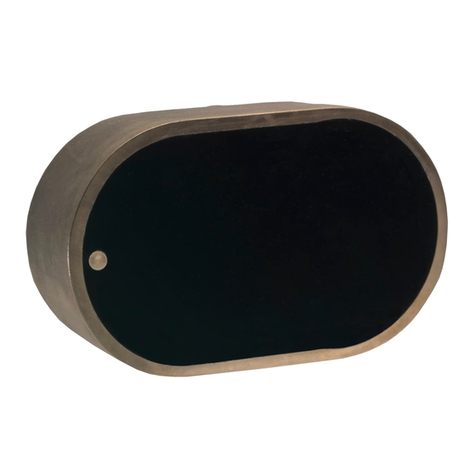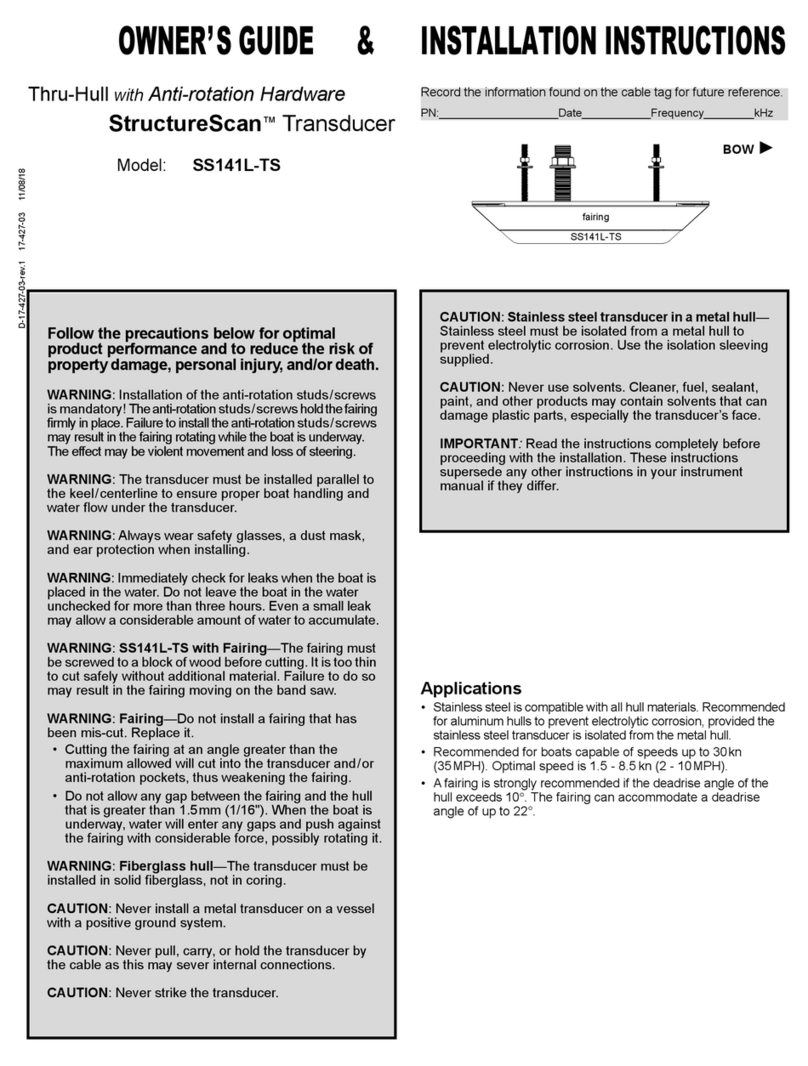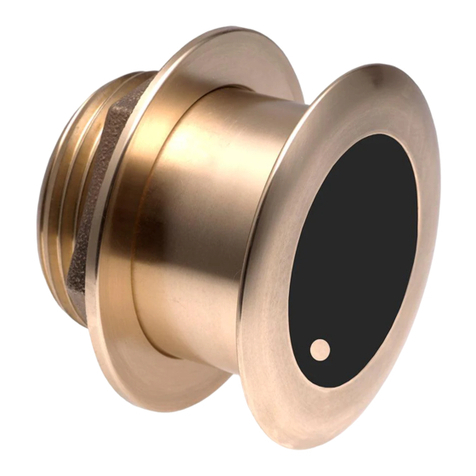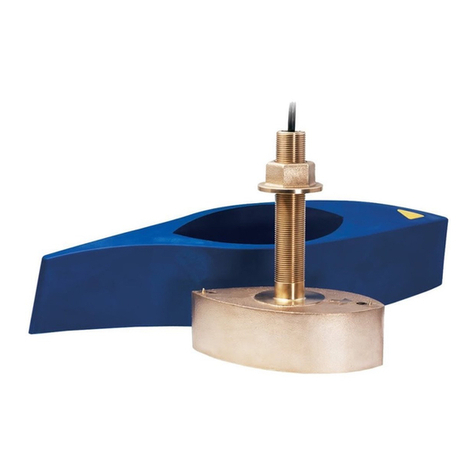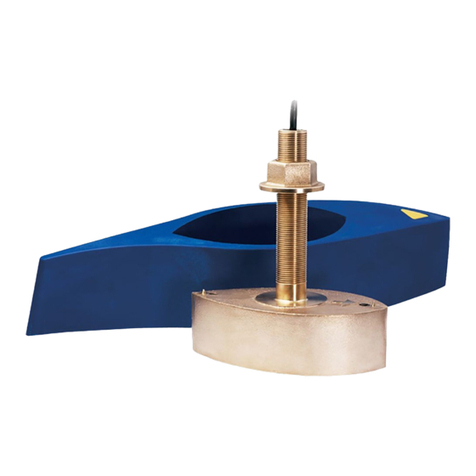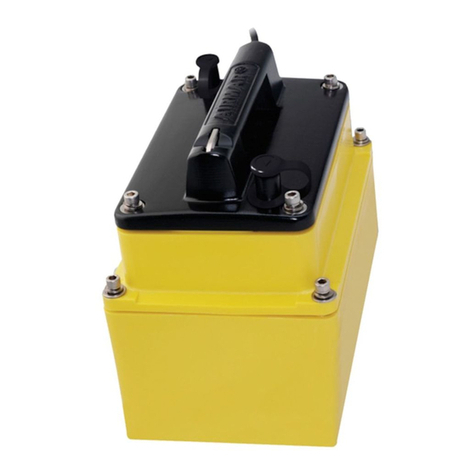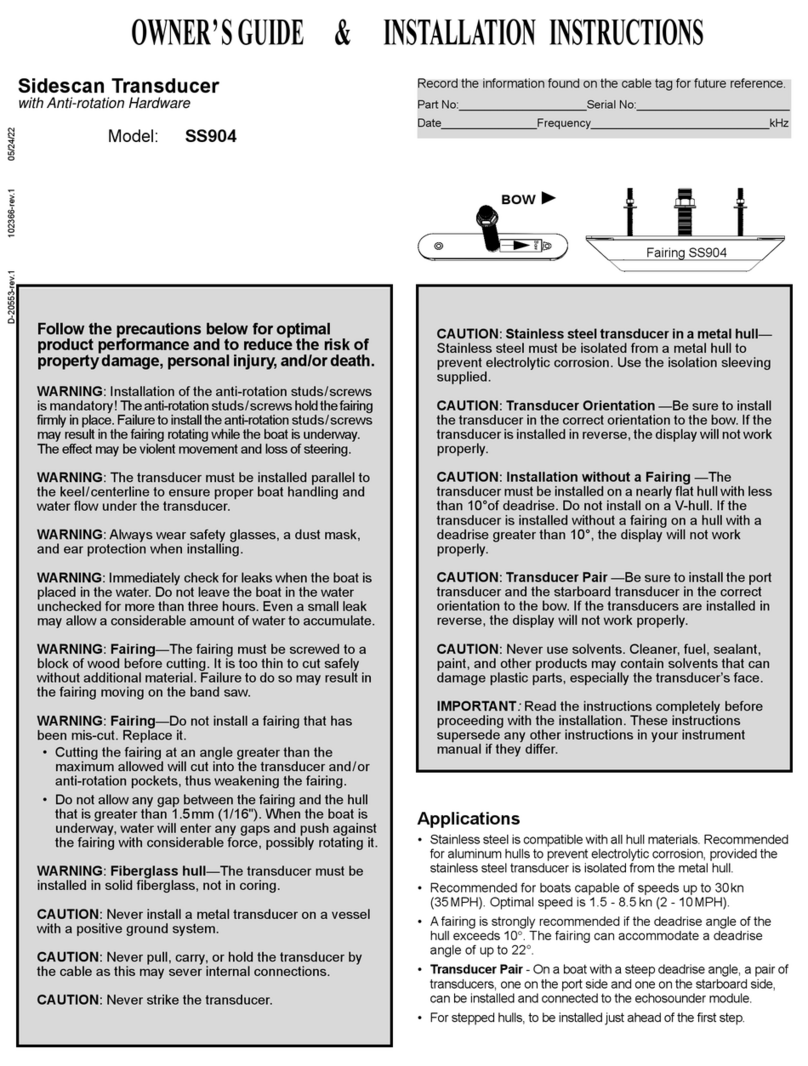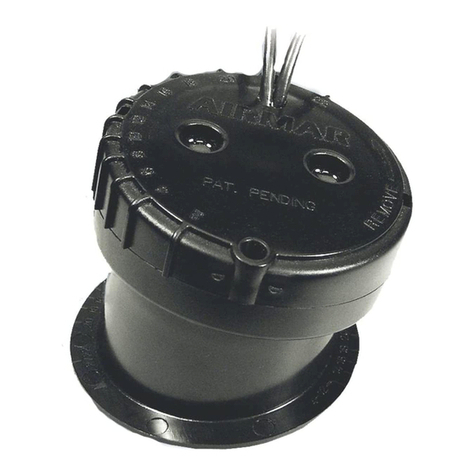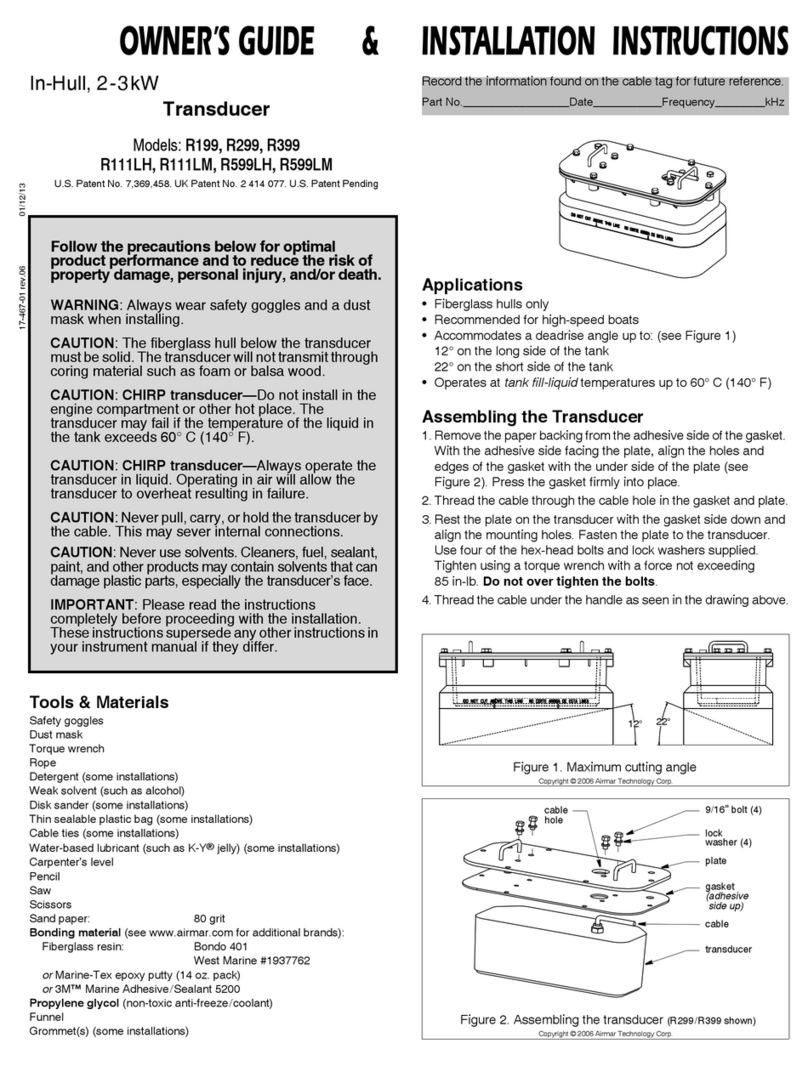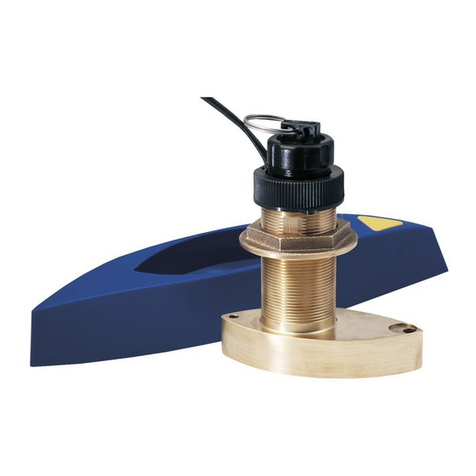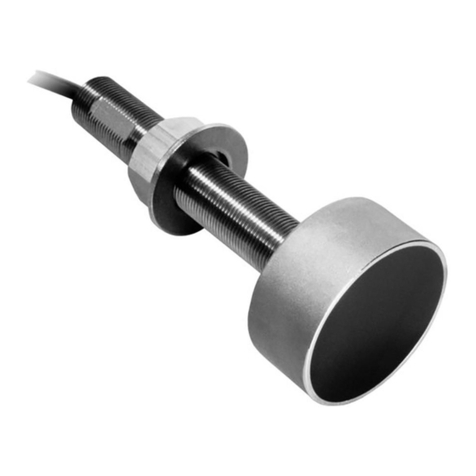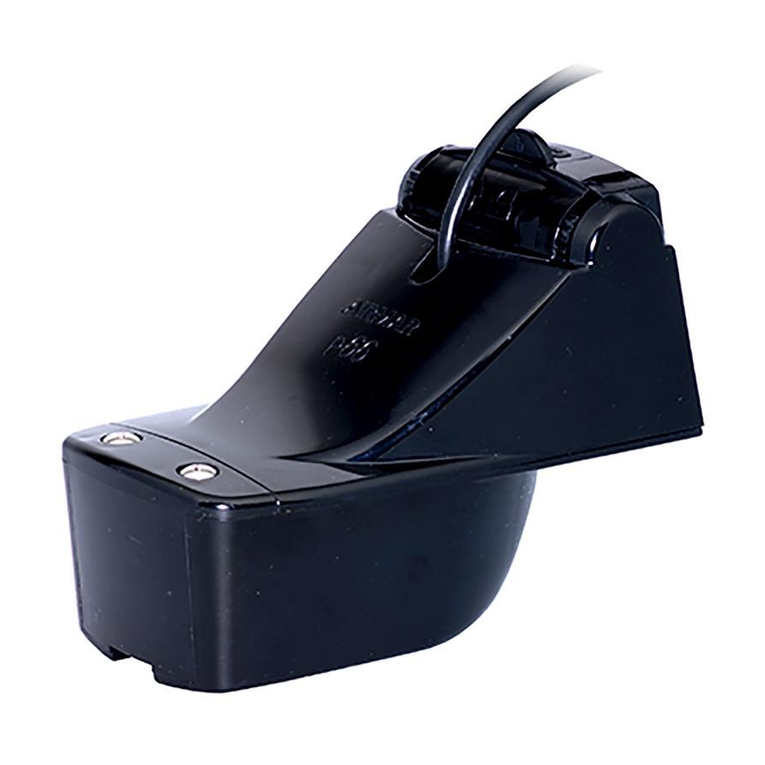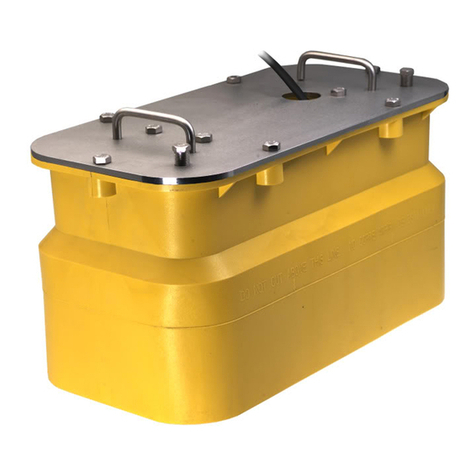
4Copyright © 2005 - 2022 Airmar Technology Corp. All rights reserved.
4. Push the uncolored section of each threaded rod through the
fairing, the hull and the backing block until the washer rests inside
the recess in the fairing (Figure 6). With a person stationed inside
the vessel, secure each rod with a washer (bedded side against
the backing block) and double stainless steel nuts. Use a wrench
to hold the lower nut while tightening the top nut against it.
Aluminum hull—The top of the isolation sleeve must be below
the top of the backing block to prevent the sleeving from
interfering with tightening the nuts.
Wood hull—Allow the wood to swell before tightening the nuts.
Transducer: Bedding & Installing
1. Apply a 2mm (1/16") thick layer of marine sealant to the surface
of the transducer that will contact the fairing including the
recesses for the washers and nuts (Figure 8).
2. Thread the transducer cable through the stuffing tube.
3. Slide the transducer onto the threaded rods, being sure the
rounded bottom is facing forward toward the bow and the
temperature sensor is aft. Seat the transducer firmly within the
recess in the fairing. Secure the transducer in place by applying
a washer and a nylon locking nut to each threaded rod.
Tighten each nut with a torque wrench using a force not
exceeding 12N-m (10ft.-lb.). Then tighten each nut again using
a force not exceeding 27N-m (20ft.-lb.). Do not over tighten as it
may crack the transducer and/or crush the fairing. Be sure the
rods extend a minimum of 3 threads beyond the nut after
being tightened.
4. Plug the mounting holes to minimize turbulence on the surface
of the transducer. Be sure there is marine sealant on the
exposed threads of the rods. Cut the white foam plugs to length
so that when installed, each plug is recessed 5mm (3/16")
below the surface of the transducer. Push the foam plugs into
the holes. Use marine sealant to fill the remaining recess flush
with the transducer’s surface.
5. Remove excess marine sealant on the outside of the hull to
ensure smooth water flow under the transducer.
Sealing & Routing the Cable
To form a watertight seal inside the stuffing tube, follow the
installation instructions that came with your stuffing tube. The
completed installation will look like Figure 9.
1. Route the cable to the echosounder, being careful not to tear the
cable jacket when passing it through the bulkhead and other
parts of the boat. Use grommet(s) to prevent chafing. To reduce
electrical interference, separate the transducer cable from other
electrical wiring and the engine. Coil any excess cable and
secure it in place with cable ties to prevent damage.
2. Refer to your echosounder owners manual to connect the cable
to the instrument.
Checking for Leaks
When the boat is placed in the water, immediately check around
the threaded rods and the stuffing tube for leaks. Note that very
small leaks may not be readily observed. It is best not to leave the
boat in the water unattended for more than 3 hours before
rechecking. If there is a small leak, there may be considerable
bilge water accumulation after 24 hours. If a leak is observed,
repeat the bedding and installing procedures beginning on page 3
immediately.
Maintenance, Repair & Replacement
Antifouling Coating
Surfaces exposed to saltwater must be covered with an anti-
fouling coating. Use a water-based anti-fouling coating made for
transducers only. Never use ketone-based paint, since ketones
can attack many plastics possibly damaging the transducer. Brush
on anti-fouling coating every 6 months or at the beginning of each
boating season.
Cleaning
Aquatic growth can accumulate rapidly on the transducer’s
surface reducing its performance within weeks. Clean it using a
Scotch-Brite® scour pad and mild household detergent, being
careful to avoid making scratches. In severe cases, lightly wet
sand the surface with fine grade wet/dry paper.
Replacement Transducer & Parts
The information needed to order a replacement transducer is printed
on the cable tag. Do not remove this tag. When ordering, specify the
part number, serial number, date and frequency in kHz. For
convenient reference, record this information on the top of page 1.
Lost, broken and worn parts should be replaced immediately.
Obtain parts from your instrument manufacturer or marine dealer.
Gemeco USA
Tel: 803-693-0777
Airmar EMEA Europe, Middle East, Africa
Tel: +33.(0)2.23.52.06.48
Email: sales@airmar-emea.com
cable
backing block
fairing
hull
stuffing tube
transducer
Figure 9. Completed installation (non-metal hull shown)
Copyright © 2005 Airmar Technology Corp.
aft view
35 Meadowbrook Drive, Milford, New Hampshire 03055-4613, USA
www.airmar.com

